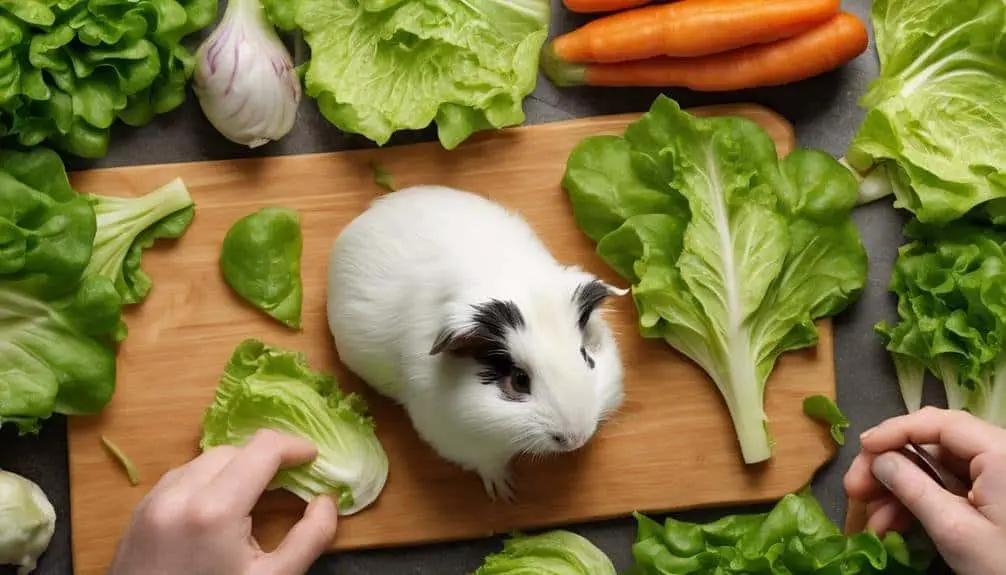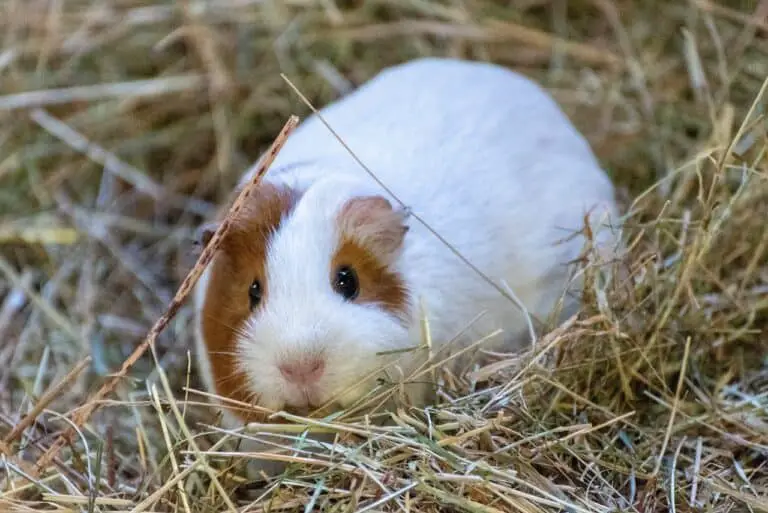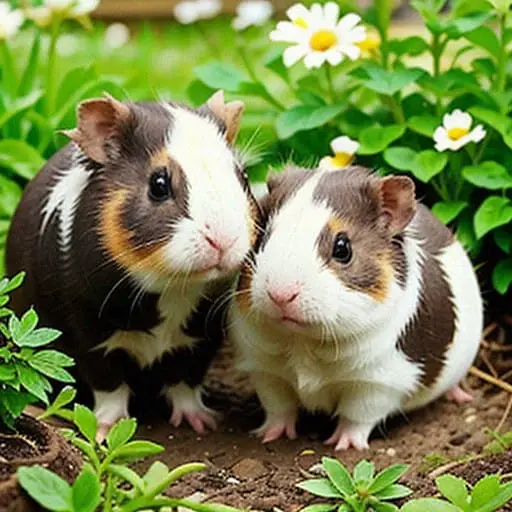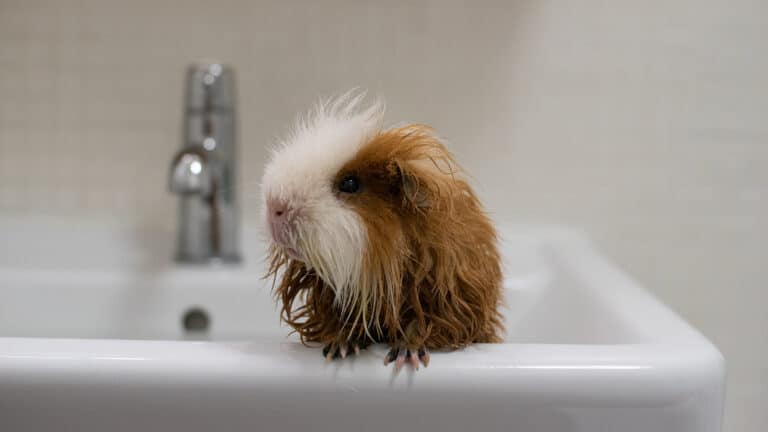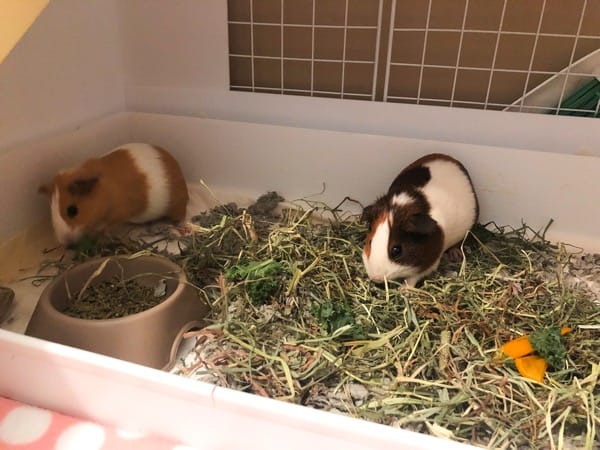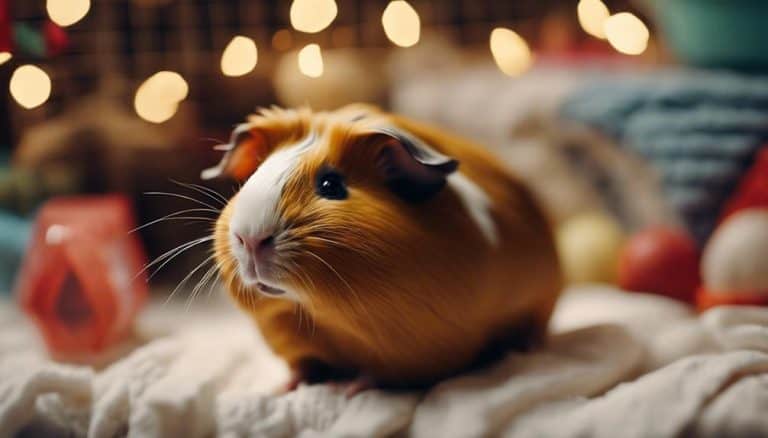How Guinea Pigs Can Safely Eat Lettuce: A Guide
When it comes to feeding guinea pigs lettuce, the saying ‘everything in moderation’ certainly holds true.
But have you ever wondered about the specific types of lettuce that are safe for these adorable creatures to munch on?
Let’s explore the nuances of how guinea pigs can safely enjoy their leafy greens, ensuring a well-balanced and healthy diet for our furry friends.
Types of Lettuce Safe for Guinea Pigs
When caring for guinea pigs, it’s essential to provide safe and nutritious options for their diet. Three recommended types of lettuce include Romaine, Cos, and Little Gem. Romaine lettuce stands out for its high vitamin C content, crucial for guinea pigs’ health. Little Gem lettuces, being smaller versions of Romaine with compact leaves, are suitable for guinea pigs to consume.
Additionally, Romaine Hearts, often conveniently available in supermarkets with the outer leaves removed, offer a practical choice for guinea pig owners.
Nutritional Benefits of Lettuce for Guinea Pigs
Guinea pigs benefit greatly from the nutritional value that lettuce provides, including essential vitamins and hydration for their well-being. Romaine lettuce, in particular, is rich in vitamin C, crucial for preventing scurvy in guinea pigs. The hydration and essential nutrients like calcium found in lettuce make it a valuable addition to their diet.
Additionally, including lettuce offers variety and acts as a digestion aid for guinea pigs. Being a low-calorie option, lettuce can be a beneficial part of their regular diet. However, it’s important to monitor the calcium intake from lettuce to prevent bladder stones in guinea pigs.
How to Introduce Lettuce to Guinea Pigs

Gradually introducing lettuce to your guinea pigs allows them to adjust to this new food without experiencing digestive issues. Begin by offering small amounts of lettuce to gauge their response. To emphasize the importance of a controlled introduction, consider the following table:
| Introducing Lettuce to Guinea Pigs | |||
|---|---|---|---|
| Start with small amounts | |||
| Monitor for allergies | |||
| Offer different types of lettuce | |||
| Watch for changes in behavior | |||
| Provide variety in their diet |
When offering lettuce, be observant for any signs of allergies or sensitivities. Introducing different types of lettuce can provide variety in their diet and prevent boredom. Watch closely for changes in stool or behavior, which could indicate any issues with the new food. By following these steps, you can ensure that your guinea pigs safely eat lettuce and adjust to this new addition to their diet.
Quantity Guidelines for Feeding Lettuce to Guinea Pigs
To ensure optimal health and nutrition for your guinea pigs, it’s essential to adhere to specific quantity guidelines when feeding them lettuce. Guinea pigs can safely eat 1-2 leaves of lettuce daily, ensuring they receive adequate Vitamin C from this leafy green.
It’s crucial to introduce lettuce gradually into their diet to prevent any digestive issues. While Romaine lettuce is a preferred choice due to its high nutritional value and lower calcium content compared to other types, precautions should be taken.
High calcium levels and excess oxalic acid in lettuce can be harmful to guinea pigs, so moderation is key. When feeding lettuce to your guinea pigs, monitor them closely for any signs of diarrhea, bloating, or allergic reactions.
Consulting a vet for specific dietary recommendations and avoiding sudden changes in their diet are essential practices to keep your guinea pigs healthy and happy.
Monitoring Guinea Pigs’ Response to Lettuce

When introducing lettuce to your guinea pigs’ diet, it’s essential to observe closely for any signs of adverse reactions such as diarrhea, bloating, or allergic responses. Monitoring your guinea pigs’ response to lettuce involves watching for any behavior changes, digestive issues, or unusual stools that may indicate a negative reaction to the new food. Keep an eye on their overall health and well-being as they adjust to eating lettuce to ensure they’re tolerating it well.
If you notice any concerning signs like diarrhea, bloating, allergic reactions, or persistent digestive problems after introducing lettuce, it’s crucial to consult a veterinarian promptly. Veterinarians can provide guidance on how to address any issues and may recommend adjusting the guinea pigs’ diet or providing additional medical care if necessary. Being proactive in monitoring your guinea pigs’ response to lettuce can help ensure their health and well-being as they explore this new addition to their diet.
Conclusion
In conclusion, lettuce can be a safe and nutritious addition to a guinea pig’s diet when offered in moderation.
Romaine, Cos, and Little Gem lettuce are popular choices that provide essential vitamins and minerals for these pets.
By following quantity guidelines and monitoring their response to lettuce, guinea pig owners can ensure that their furry friends enjoy a balanced and healthy diet.
Remember to always prioritize the well-being of your guinea pig when introducing new foods into their diet.

